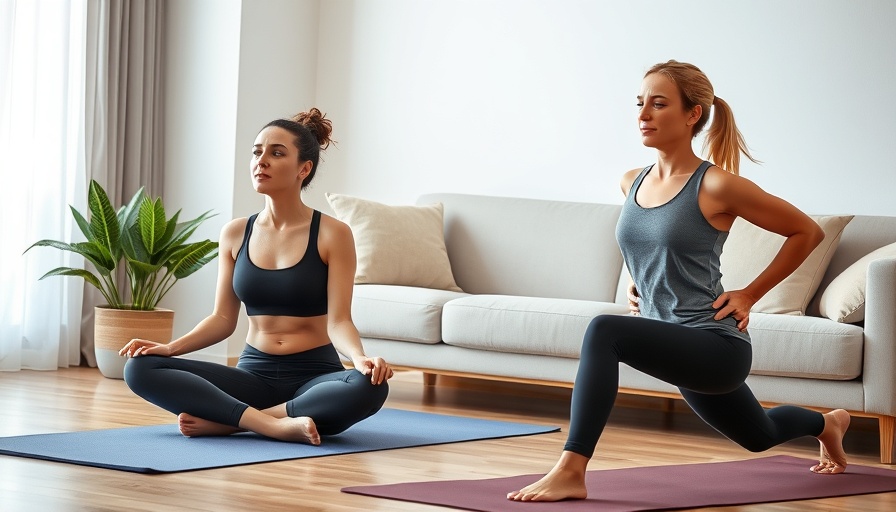
Understanding Menopause: Not Just a Phase
Menopause marks a significant transition in a woman's life, often portrayed as the end of youth and vitality. However, it's important to view it as a pivotal moment rather than a terminating phase. Officially, menopause is defined as the time when a woman experiences twelve consecutive months without a menstrual cycle and typically begins between the ages of 46 and 56. The time leading up to this, known as perimenopause, is when many women first encounter an array of bodily changes, alongside emotional fluctuations. During this period, estrogen levels fluctuate, leading to symptoms like hot flashes, mood swings, and unfortunately, weight gain.
What Contributes to Weight Gain?
It’s common for women to gain approximately four to six pounds during the three and a half years leading up to menopause. This weight gain sometimes feels relentless, triggering experiments with diets and exercise regimens that seem to yield little result. Yet, research indicates that the factors influencing weight gain are often multi-faceted, encompassing hormonal shifts, sleep disturbances, and dietary habits.
One expert, Dr. Helen Kollias, indicates that while metabolism may slow down slightly with age, the predominant drivers of weight gain during menopause include lifestyle factors rather than metabolic decline. Moreover, scientific studies explain that there’s generally a loss of muscle mass as we age, which further influences weight.
The Hormonal Influence on Weight
As estrogen levels decline in perimenopause and menopause, the mechanisms that control weight gain become disrupted. Elevated levels of cortisol, known as the stress hormone, can also hinder weight management efforts. Stress, sleep deprivation, and hormonal imbalances collaborate to create a challenging cycle. Dr. Pelin Batur highlights that even with the same caloric intake, women find it tougher to maintain their weight during this transition.
Common Misconceptions About Menopause Weight Gain
Many women erroneously believe that menopause alone is responsible for their weight gain. Experts emphasize that while hormonal changes play a role, poor sleep and consistent stress levels can exacerbate weight issues. An essential aspect of addressing menopause-related weight gain is recognizing that lifestyle changes, such as enhanced nutrition and physical activity tailored to your body’s needs, can significantly mitigate these effects.
Practical Strategies for Managing Weight During Menopause
Embracing a healthy lifestyle becomes critical as the body changes. Here are some actionable strategies that can help regulate weight effectively during this transition:
Prioritise Sleep: Quality sleep is paramount. Sleep disturbances are common during menopause, and addressing them can greatly improve hormonal balance and support weight management.
Mindful Nutrition: Focus on whole foods, rich in nutrients and low in processed sugars. This includes a diet high in fruits, vegetables, lean proteins, and healthy fats, which can help manage weight and mitigate other menopause symptoms.
Regular Exercise: Incorporate a balanced exercise regimen that includes cardiovascular workouts, strength training, and flexibility exercises like yoga to boost metabolism and improve overall well-being.
Stay Hydrated: Drinking adequate water can help with digestion and the metabolic processes, making it easier for the body to regulate weight.
Embracing this Transition
Weight gain during menopause can feel frustrating, but it's essential to approach this stage with understanding and a proactive mindset. Connecting with healthcare providers to discuss individual concerns and challenges is crucial, leading to tailored solutions that consider one's unique health needs.
In summary, menopause should not be viewed solely as a time of physical decline but as an opportunity for renewal and self-care. By implementing mindful dietary choices, ensuring adequate exercise, and fostering emotional well-being, women can navigate this transition while feeling empowered. Remember, it’s not all in your head — your hormones and lifestyle play a significant role. Let’s embrace this stage together, transforming challenges into opportunities for vibrant health and wellness.
Take Action on Your Menopause Journey
By focusing on practical strategies and embracing the changes your body undergoes, you can take control of your health amidst the challenges of menopause. Don’t hesitate to reach out for support—whether from healthcare professionals, supportive peers, or through educational resources available in your community. It's never too late to start making healthier choices and reclaiming your vitality!
 Add Row
Add Row 

 Add Element
Add Element 


Write A Comment